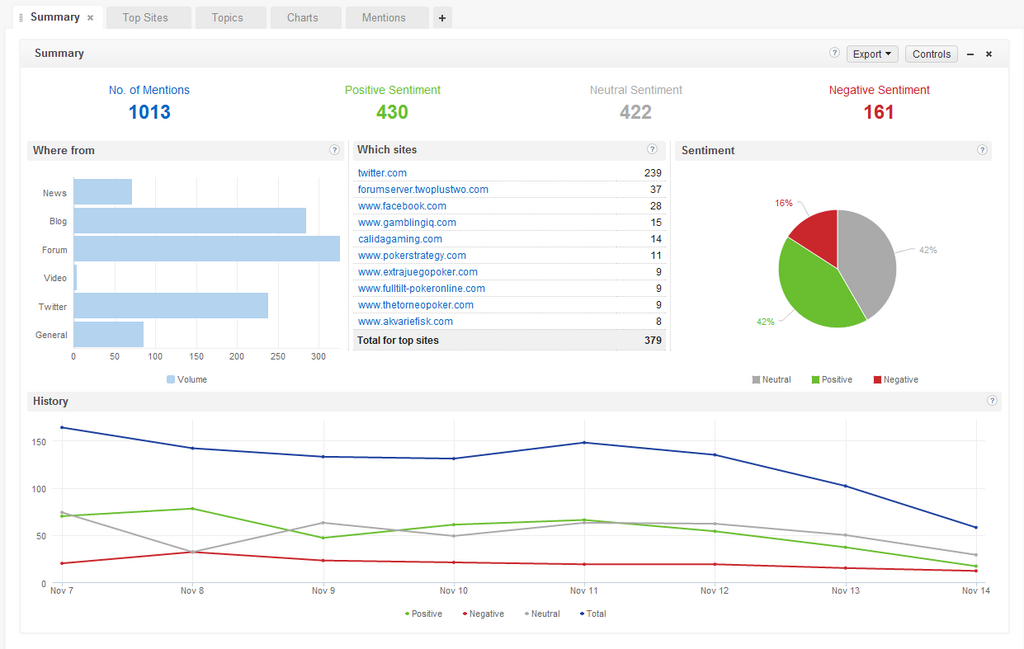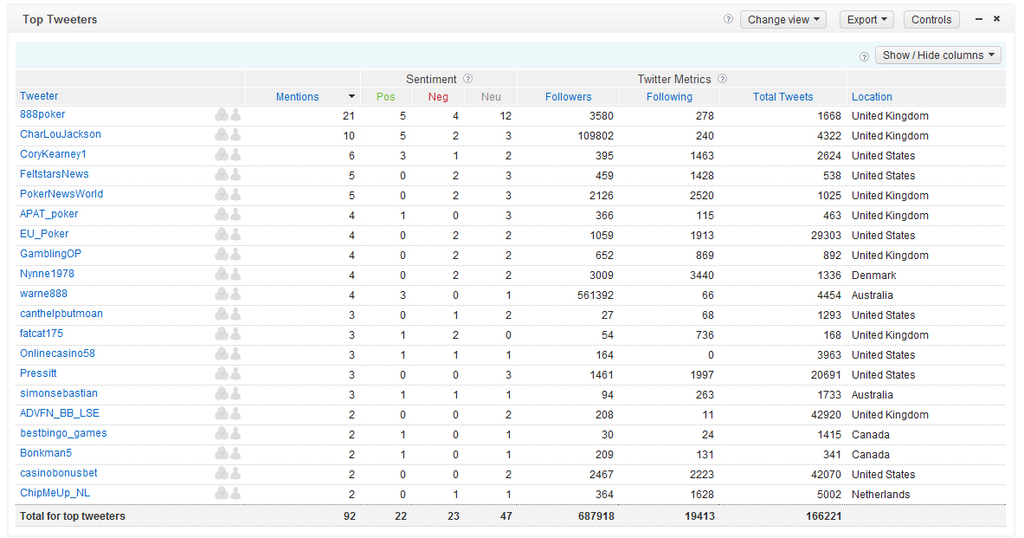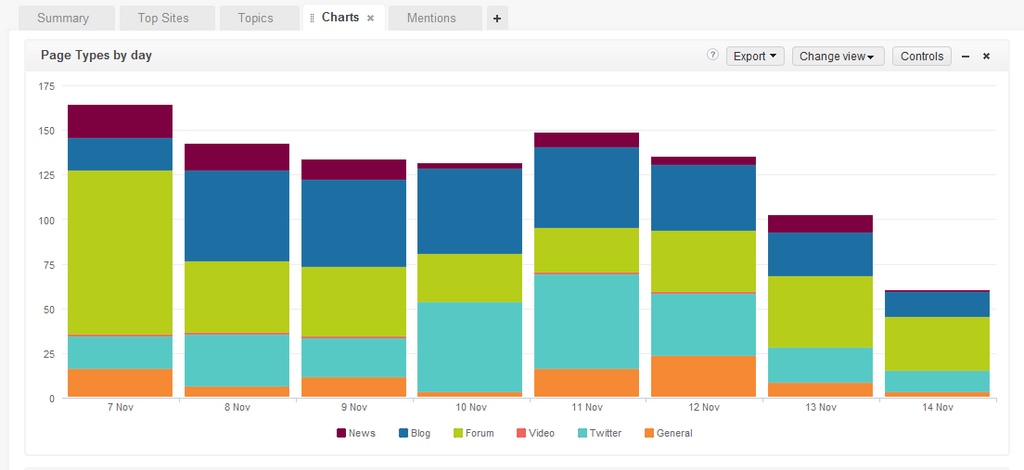20 Social Media Holidays to Celebrate This May
By Yasmin PierreApr 10
Unlock the secrets to staying ahead in the ever-evolving world of social media marketing.
Published November 14th 2011
Today we have a guest post from Sean Walsh – a Community Manager at Brandwatch’s client Freestyle Interactive, a Top 30 full-service digital agency with offices in the UK and France. Freestyle offer strategic consultancy, creative design, technical build and customer engagement across a range of digital channels.
Here, Sean talks us through how Freestyle use Brandwatch to develop social strategies for their clients. Over to Sean!
As a Community Manager, the starting point for any social strategy we create for clients is always ‘who is the audience?’. The Freestyle Interactive ethos is one that Content, Search and Social are all entwined and interdependent, hence why our copywriters, SEO experts and Social team all sit in one team.
With that in mind, we feel that you can’t start to write copy, optimise for search or set up a social media strategy until you have a broad understanding of the audience and what their needs are.
So, whenever we have a client come to us wanting to do something in the social space, we always ask: ‘who is your audience?’
The Landscaping Phase
For many brands, doing Social Media involves creating content about the messages and topics they want to talk about, and it usually involves some kind of marketing objective – convert leads, manage brand reputation, promote our services. The strategy tends to start looking down at the customer from the brand perspective, rather than looking up.
Our first step comes in the form of what we call ‘Landscaping’ – which is the process of:
To unearth all this data manually would be an enormous and completely unrealistic task, so we utilise Brandwatch. Many agencies and companies use Social Media software like Brandwatch to exclusively monitor mentions of their brand and their competitors. We go further than that and really push the software to its limits – we use Brandwatch to not just pick up brand mentions, but help pull out communities, themes and influencers to help devise a strategy. We have used Brandwatch to take a ‘bottom-up’ approach.
With the right amount of desk and keyword research to ensure that we set up the correct search query, Brandwatch scours the web and displays mountains of data in an easy to use interface segmented into tabs: summary, top sites, topics and charts.
The Summary Tab
The summary page is often the most useful to show to clients, it covers sentiment, volume of mentions, top sites, channel segmentation and a customisable line graph history showing which days, weeks, months or years worth of data.

You don’t get a great level of detail about the data here, but it does serve as a quick snapshot of what the social ‘landscape’ looks like. So, if you were wanting to find out about farming communities, you might be able to learn instantly that they are incredibly active on forums and Twitter, but not so much on YouTube or Blogs, as well as see any peaks or troughs in conversation.
Top Sites
The top sites tab is incredibly helpful for pulling information surrounding influence and activity. Say now we know that farmers use Twitter and we want to find out – who should we start talking to?
The ‘Top Tweeters’ tool is invaluable for very quickly measuring who is the most active tweeter, as well pulling in metrics such as Klout and PeerIndex to try to give a sense of social media influence. Obviously, just because somebody tweets a lot doesn’t mean they are influential – but it’s a good place to start generating dialogue as you’re more likely to get a response from a very active Twitter user.

Similarly, mechanisms like ‘Top Blogs’ or ‘Top Forums’ provide the same service but with integrated seoMoz and web traffic stats.
Topics
Brandwatch analyses recurring words and phrases within the search data, and from this can determine the most common ‘Topics’.
This is particularly useful during landscaping as it allows us to see an overall vision of what content is being talked about, especially topics that we may have not noticed during our desk research.
Furthermore, as Brandwatch pulls in more data on a daily basis, these topics change and allow us to track conversation in realtime and dissect what event or piece of content prompted that change. By following the flow of conversation during landscaping we can gauge the tone, frequency and influence of content on the audience and use all these insights to determine a more effective strategy.
Charts
One of the greatest benefits of Brandwatch is its ability to convert raw data into engaging charts and diagrams. It’s common fact that visualised data is simply easier (and more interesting) to digest, showing a chart that demonstrates the growth of a conversation is obviously going to be more powerful than an huge excel spreadsheet outlining every single mention.
Brandwatch Charts are incredibly easy to customise with a choice to organise by sentiment, page type, time, language, site, location, categories, tags, MozRank – the list goes on. Brandwatch generated charts are a fantastic way to visualise what is often thousands of pieces of data – in a quick, easy and clear manner.

Powerful Insights, Quickly
Overall, by using these Brandwatch features we can very quickly get a detailed picture of what a social landscape looks like, and this provides us with the justification and evidence to tailor make a suitable Social Media strategy for our clients.
Brandwatch doesn’t just have to be used as a brand reputation or customer service tool – it can be used to extract real Social Media and Audience insight. By using Brandwatch for this, we can formulate a much more robust and targeted Content, Search and Social strategy.
Thanks to Sean for this – we always enjoy hearing about how our agency customers are using Brandwatch to help their clients.
Offering up analysis and data on everything from the events of the day to the latest consumer trends. Subscribe to keep your finger on the world’s pulse.
Consumer Research gives you access to deep consumer insights from 100 million online sources and over 1.4 trillion posts.
Existing customer?Log in to access your existing Falcon products and data via the login menu on the top right of the page.New customer?You'll find the former Falcon products under 'Social Media Management' if you go to 'Our Suite' in the navigation.
Brandwatch acquired Paladin in March 2022. It's now called Influence, which is part of Brandwatch's Social Media Management solution.Want to access your Paladin account?Use the login menu at the top right corner.



